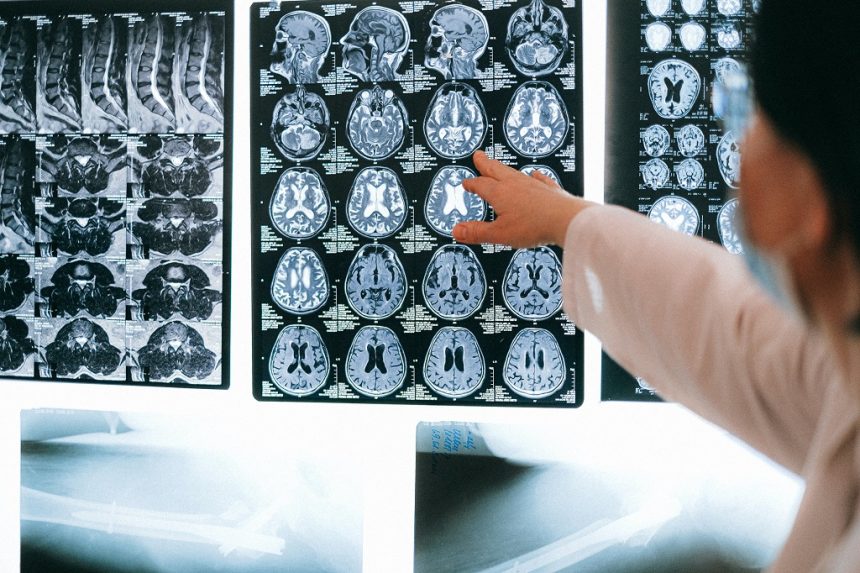By Carmen Rioja
I want to share this information with you because you never know who may be suffering from a scary disease and losing hope.
Six years ago, we changed our diet to a lactose-free diet low in red meat and chicken so that we could avoid the hormones these products might contain and, in my view, to prevent them from aggravating a tumor in the pituitary gland. At the same time, other friends and dear family members developed tumors that awaited diagnosis, scheduling of surgery, possible radiotherapies, and prescription of medications—three dear people at the same time.
I began an obsessive search for information. It was not easy to see a 5-centimeter tumor on my daughter’s head, nor would it be easy to make decisions for any of the patients.
Thank God for libraries! If I hadn’t felt at ease after reading a lot, I’m sure we would have had a dangerous, unnecessary surgery. Ours was a challenge of patience and faith in science.
After a string of specialist doctors perplexed by the images, they sent us to the neurosurgeon. The case was of macro-prolactinoma, a tumor that causes high levels of the hormone prolactin, hence its name and classification. We fell into the blessed hands of a doctor of integrity who told us, “We will do everything possible not to operate. We may have to come to that decision, but first, we will exhaust all possibilities.” It was undoubtedly a delicate operation even in the hands of one of the most-recognized Mexican experts in the field. The tumor was enveloping one of the arteries in the brain called the carotid, so the procedure presented a dangerous challenge.
He explained that we would try a new experimental therapy with a relatively harmless drug that was used for something else⎯specifically for mothers to suspend breastfeeding for medical indications⎯but almost accidentally, it was discovered that it slowed and even decreased the size of tumors of this type. If this were the case, perhaps we could avoid surgery.
The first few months were horrible—long waits, contrasted MRIs every two months, campimetries, revisions, and dosage increases. And little happened. But the doctor assured us that as long as she did not present more symptoms such as blindness, migraine, or an intense runny nose, we could wait a little longer before operating. Those were the times to read, research, ask for other opinions, and weigh the criteria. Almost everyone agreed—our situation required time, patience, healthy eating, and confidence.
After six months of therapy, a new contrasting MRI showed us a miracle⎯the tumor had shrunk to half its original size. We had moved a step forward.
After two years, the tumor was less than 2 centimeters, which made it a micro prolactinoma⎯certainly a better prognosis.
It took six years of MRIs every six months, uninterrupted expensive therapy treatment, and iron discipline in lifestyle, healthy eating, and frequent exercise by the patient so that this spring the images finally showed just a few millimeters of the trace of a tumor.
The other two patients also had extraordinary doctors from UNAM. Despite this, the first of them, my relative, had other types of tumors that caused neoplasia and metastasis. The development was very fast, and unfortunately, we lost him after four months with a lot of pain. However, he had the best possible care for his case. And the second, our friend Isaac, had a major surgery where they removed a ball the size of a grapefruit. He is currently well and continues to monitor his health.
Anyway, this healthy guide from a Mexican woman shares with you the miracles of science—that they are nothing more than the most desirable results, and in some exceptional cases, thanks to methodical research attached to the discipline.
Where to investigate and how to investigate have become the new science of metacognition. Since the pandemic and even several years before with the internet network revolution, the most relevant information is now at hand. Public libraries and universities contain the most representative of each section, to be delighted and lost in that labyrinth of knowledge and learning tools. In addition, access portals have been opened for researchers so that scientific reports can reach a greater number of readers and other researchers in real time. By crossing data we reached firm conclusions, and what was “experimental” is proven by facts referred to in scientific reports. And here is my oxymoron: Thank God for science!”
Learning to investigate and learning to learn is “in.” If you are interested in science and want to learn more, always look for university or institutional sites that are truthful, reliable, and up to date. Visit the Public Library of San Miguel de Allende, A.C., at Insurgentes 25, Centro, San Miguel de Allende.
And for digital navigation, here I share one of my favorites from the University of Oxford that you can translate with Google: academic.oup.com/journals.
Carmen Rioja is a Mexican artist who specializes in art restoration and creative workshops. She likes to write stories and poems and throw them in imaginary bottles into the sea. Rioja has published the books “La Muerte Niña” and “Rojo 43.” riohoja@yahoo.com @carmen.rioja.

